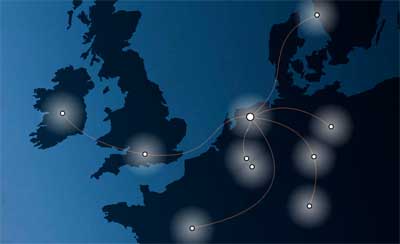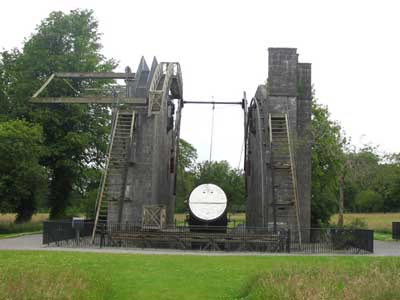The LOFAR radio station in Onsala, Sweden
One day Ireland could be a hub for scientific research into the early universe after the Big Bang in order to glean more insights about its evolution. Irish businessman and financier Dermot Desmond has now invested into the planned radio telescope project, called i-LOFAR, which is destined for Birr in Co Offaly.
Trinity College Dublin (TCD), under the direction of Dr Peter Gallagher, is leading a consortium of 12 universities on the island of Ireland to get a radio telescope in place in the country.
Right now, a network of LOFAR telescopes are already in place in countries such as the Netherlands, Sweden, Germany, France and the UK.
Study black holes in distant galaxies
One of the aims of the LOFAR network is to study black holes in the centre of distant galaxies, with more detail than ever before. Gallagher says the telescopes can also allow scientists to search for planets outside of our solar system, to track solar storms and their impact on Earth, and to study the birth of stars and planets.
“All of the data goes back to an IBM supercomputer in Holland, which crunches up the numbers, so that the scientists can then study the information,” explains Gallagher, who is the head of the Solar Physics Group at TCD.
Dermot Desmond investment
He says Desmond has invested in the planned telescope, which will cost in the region of €1.5m to build at Birr Castle.
While Gallagher says he is not at liberty to disclose the exact sum Desmond had donated to the i-LOFAR project, he says Desmond has recognised both the scientific educational return the telescope will have for Ireland, bringing about the next generation of Irish scientists and engineers, as well as the economic and tourism return it can attract.
And why has Birr Castle been chosen to put i-LOFAR in situ? “It’s an ideal site to place the telescope, which is like a super FM radio receiver that picks up waves from outside of our planets,” explains Gallagher. “We can use it to study the early universe after the Big Bang.”
He says another reason why Birr is ideal is because there is no radio interference at the Midlands location.

LOFAR network in Europe, including the planned i-LOFAR in Ireland
So where is the project at right now then?
“”We need the Government to buy into it or we need a large corporate sponsor. The €1.5m telescope will hook Ireland into a €150m European network and it will work at high and low radio frequencies,” says Gallagher.
While the current network of telescopes around Europe are being used for astronomy research purposes, Gallagher says these telescopes can also be used to test out computer technologies. In Ireland, for instance, he says that Intune Networks is interested in using to test out its future technologies.
He says it can also be used as a space weather telescope to study solar storms, for instance.
Science education
Science education is another area of scope for the telescope, he says, especially for researchers to carry out creative technology projects.
“We’re going to train scientists, engineers and computer scientists to help them get master degrees and PhDs in these areas. There’s going to be an educational return on it.”

The Great Telescope, otherwise known as Rosse Telescope, named after the 3rd Earl of Rosse, which is on the grounds of Birr Castle. Completed in 1845, it was the largest telescope in the world for a time
Next frontier in astronomy?
And as for tourism, Gallagher says a science visitor centre could also be built at Birr Castle.
“It could be the next frontier in astronomy. What many people don’t realise is that Birr Castle itself is a historic astronomy site. It had the largest telescope (Rosse) in the world from the 1840s up until the 1920s,” he explains.
Finally, Gallagher says that LOFAR can be up and running in a short time.
“It’s the IKEA flatpack of radio astronomy,” he laughs. “It needs to be placed in a field the size of a football pitch and it needs a fibre optic connection.”
One issue, he says is that the area round Birr needs a fibre system upgrade to link into LOFAR, but he says such an upgrade will have a positive impact on the Midlands region, in terms of the R&D, rural development and the tourism and economic spin-offs for Ireland.